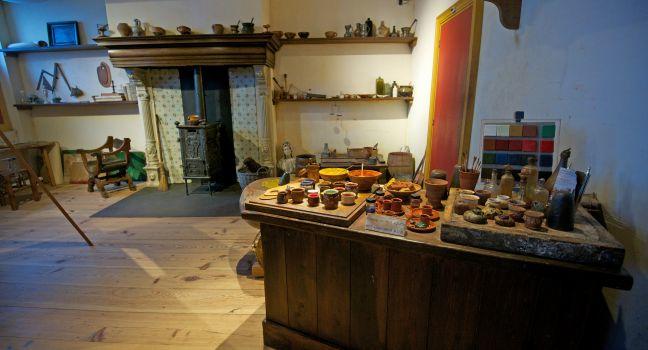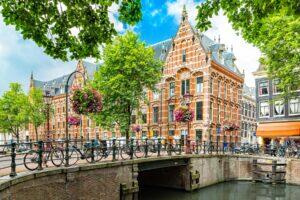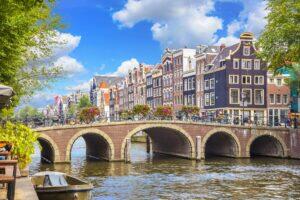Fodor's Expert Review Museum het Rembrandthuis

This is the house that Rembrandt, flush with success, bought for 13,000 guilders (a princely sum) in 1639, and where he lived and worked until 1656, when he declared bankruptcy. The house interior has been restored with elegant contemporaneous furnishings and artwork in the reception rooms—a collection of rarities that match as closely as possible the descriptions in the inventories made when Rembrandt was forced to sell everything—but it doesn't convey much of the humanity of Rembrandt himself. When he left here, he was not only out of money but also out of favor with the city after relationships with servant girls following the death of his wife, Saskia. The little etching studio is perhaps the most atmospheric. Littered with tools of the trade, a printing press, and a line hung with drying prints (there are demonstrations), it's easy to imagine Rembrandt finding respite here, experimenting with form and technique, away from uncomfortable schmoozing for commissions (and loans)... READ MORE
This is the house that Rembrandt, flush with success, bought for 13,000 guilders (a princely sum) in 1639, and where he lived and worked until 1656, when he declared bankruptcy. The house interior has been restored with elegant contemporaneous furnishings and artwork in the reception rooms—a collection of rarities that match as closely as possible the descriptions in the inventories made when Rembrandt was forced to sell everything—but it doesn't convey much of the humanity of Rembrandt himself. When he left here, he was not only out of money but also out of favor with the city after relationships with servant girls following the death of his wife, Saskia. The little etching studio is perhaps the most atmospheric. Littered with tools of the trade, a printing press, and a line hung with drying prints (there are demonstrations), it's easy to imagine Rembrandt finding respite here, experimenting with form and technique, away from uncomfortable schmoozing for commissions (and loans) in the grander salon. The museum owns a huge collection of etchings (260 of the 290 he made), and a changing selection is on permanent display. His magisterial prints Hundred Guilder and Three Crosses show that Rembrandt was almost more revolutionary in his prints than in his paintings, so this collection deserves respectful homage, if not downright devotion, by printmakers today.
READ LESS








